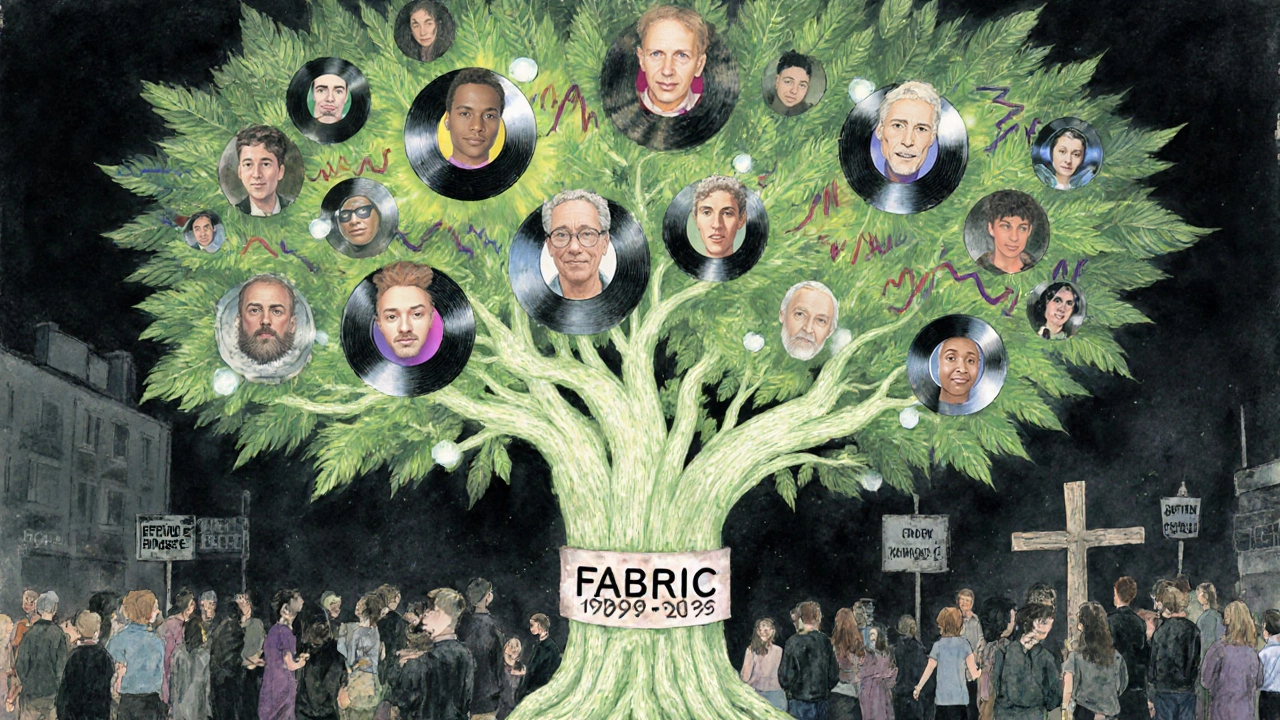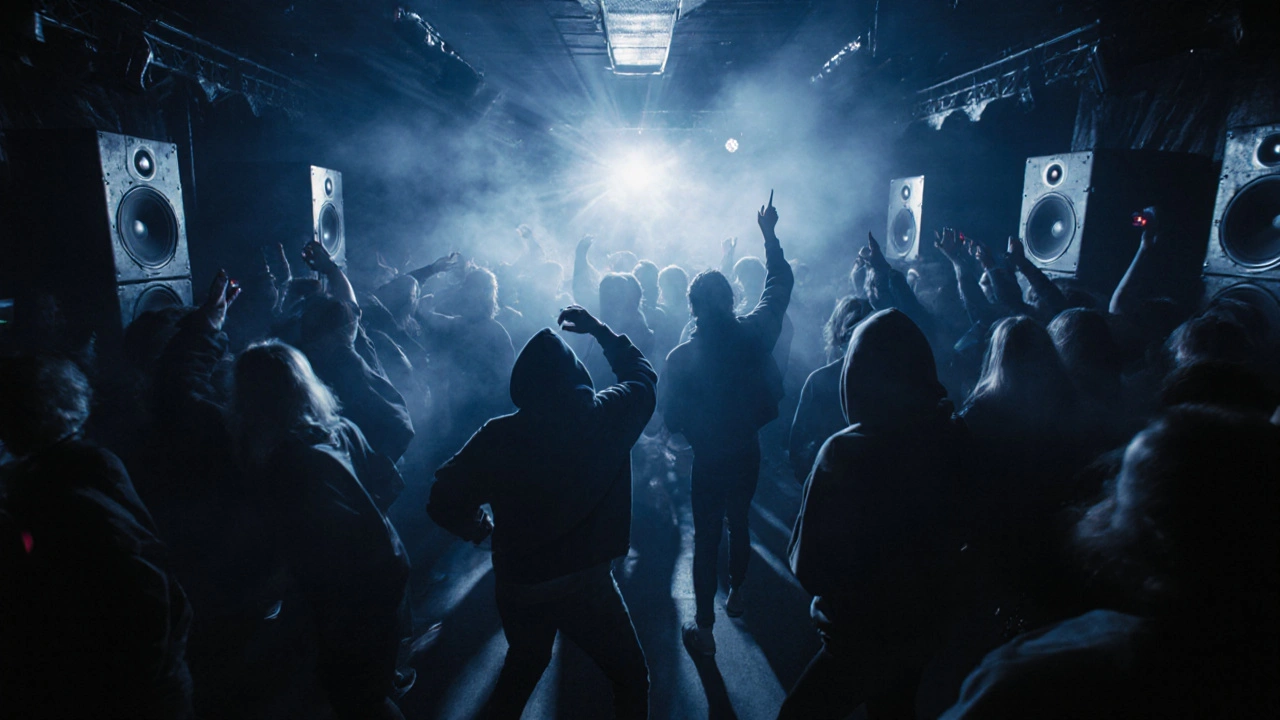In London, where the bass drops at 2 a.m. and the streets still hum with the echo of warehouse raves from the 90s, Fabric isn’t just a nightclub-it’s a living archive of the city’s underground soul. Tucked beneath the railway arches of Bermondsey, just a five-minute walk from London Bridge station, it’s the one place that never stopped moving, even as the rest of the city changed around it. While other clubs rose and fell-some swallowed by luxury condos, others drowned in corporate branding-Fabric held on. Not because it was flashy, but because it was real.
How Fabric Survived When Others Died
In 2016, London’s nightlife faced its biggest threat yet. The city council, pressured by local residents and a growing wave of anti-club sentiment, revoked Fabric’s license after a series of drug-related incidents. The closure sent shockwaves through the UK’s electronic music scene. Thousands signed petitions. DJs like Annie Mac and Carl Cox spoke out. Even the Mayor of London at the time, Sadiq Khan, publicly called it a ‘loss to the city’s cultural identity’.
But Fabric didn’t vanish. It fought back. With help from the music community, a new ownership group stepped in, redesigned the safety protocols, and reopened in 2017 with stricter door policies, on-site drug testing, and trained medical staff on every shift. It wasn’t just a reopening-it was a reinvention. Today, the club operates under a licensed harm-reduction model that’s now studied by nightlife authorities across Europe. In London, where clubs come and go like pub signs, Fabric is the exception that proved the rule: culture can survive if the community stands behind it.
What Makes Fabric Different in 2025
Walk into Fabric and you won’t find bottle service, velvet ropes, or branded cocktails with £18 price tags. You won’t see influencers posing under neon lights. Instead, you’ll hear the deep, rolling bass of a live techno set echoing through Room 1, where the walls are lined with vintage speaker cabinets from the 90s. The sound system-custom-built by the club’s own engineers-is still considered one of the best in the world. It’s not about volume. It’s about clarity. You feel the kick drum in your chest before you hear it.
Room 2, meanwhile, is where house and garage still breathe. On Friday nights, you might catch a surprise set from a local hero like DJ Stingray, who started spinning at nearby clubs like The Cross in Camberwell before making it to Fabric’s main stage. The crowd? A mix of 18-year-old students from Goldsmiths, mid-30s record collectors from Brixton, and expats from Berlin and Tokyo who’ve made London their home because, as one regular put it, ‘This is where the music still matters.’
And then there’s the basement. No sign. No queue. Just a narrow staircase leading to Room 3, where the music is always experimental-noise, industrial, ambient, or forgotten 12-inches from the early 2000s. It’s the kind of space that feels like a secret, even though it’s open to everyone with a ticket. That’s the magic of Fabric: it doesn’t chase trends. It sets them.

The London Crowd: Who Shows Up and Why
Fabric doesn’t cater to tourists. You won’t find stag parties in matching T-shirts or groups of people taking selfies with the bar. The crowd here is quiet, focused, and deeply knowledgeable. You’ll spot people who’ve been coming since the early 2000s, still wearing the same black hoodie they bought at a record shop in Soho. You’ll see young producers from South London who’ve been coming to open nights to learn the craft. You’ll hear conversations about vinyl pressing plants in Manchester, or the legacy of The Cross, which shut down in 2010 but still lives on in the playlists of Fabric’s resident DJs.
It’s not about looking cool. It’s about listening deeply. In London, where the nightlife scene is fragmented-between the glam of Soho, the EDM crowds of Wembley, and the indie bars of Shoreditch-Fabric stands apart because it doesn’t need to be loud to be heard. It doesn’t need to be trendy to be essential. It’s the place where music is treated like a religion, and the people who show up? They’re the congregation.
How to Get In (And Stay Safe)
If you’re new to Fabric, here’s how to make it work: First, buy tickets online. Walk-up entry is rare after 10 p.m. Second, dress for the floor, not the photo op. Black, dark denim, sturdy shoes-no flashy accessories. Third, bring cash. While cards are accepted at the bar, the underground vendors selling vinyl and merch only take notes.
Security is tight, but not hostile. Bag checks are standard. No drugs are allowed, but if you’re carrying them, the staff will quietly guide you to the on-site drug testing station-free and confidential. It’s not about policing. It’s about preserving the space. In a city where 87% of nightlife venues have closed since 2010, according to a 2024 report by the London Music Office, Fabric’s approach is the only one that’s working.
And if you’re over 30? You’re not too old. In fact, you’re probably exactly who they want. The average age of a regular at Fabric is 32. Not 22. Not 18. 32. That’s because the music doesn’t age. The culture doesn’t expire. And the people who keep coming? They’re the ones who remember what it felt like to lose everything-and then find it again, in the dark, under the strobe, with strangers who became family.

Why Fabric Still Matters in a Post-Pandemic London
After the pandemic, London’s nightlife changed. Some clubs pivoted to cocktail bars. Others turned into event spaces for corporate parties. But Fabric stayed true. It didn’t add a rooftop terrace. It didn’t launch a NFT collection. It didn’t partner with a streaming platform. It kept doing what it always did: playing music, loud and honest, for people who needed it.
And in 2025, that’s more important than ever. With rent prices pushing out independent record shops and live venues from Peckham to Hackney, Fabric is one of the last places where the underground still has room to breathe. It’s the last club in London that still lets you dance until 6 a.m. without a curfew. It’s the last place where a DJ from Barking can play a track no one’s heard, and the crowd doesn’t just tolerate it-they lean in.
It’s not a venue. It’s a statement. In a city that’s become more about branding than culture, Fabric says: music still has power. And if you’re willing to show up, listen, and dance without a camera, you’re still part of it.
Where to Go After Fabric
If you’ve had your fill of bass and you’re still buzzing, walk ten minutes to The Anchor in Bermondsey. It’s a 17th-century pub with a back room that still plays vinyl-only sets on Sundays. Or hop on the Tube to The Windmill in Brixton-home to the city’s most eclectic live acts and open mic nights. Or if you’re feeling nostalgic, head to The Jazz Cafe in Camden, where the spirit of the 90s still lingers in the smoke and the soul.
But don’t go home yet. The night’s not over. Not in London. Not when Fabric’s still open.
Is Fabric still open in 2025?
Yes, Fabric reopened in 2017 after a temporary closure and continues to operate under strict safety and harm-reduction guidelines. It’s open Friday and Saturday nights from 10 p.m. to 6 a.m., with occasional midweek events. Tickets are sold exclusively online through its official website.
What’s the dress code at Fabric?
There’s no official dress code, but the crowd leans toward dark, minimalist clothing-black jeans, hoodies, boots. Flashy outfits, branded sportswear, or excessive accessories are discouraged. The focus is on the music, not the look. You’ll fit in better if you dress like you’re ready to dance, not to be seen.
Can I bring my own drinks to Fabric?
No. All drinks must be purchased on-site. Outside alcohol is strictly prohibited, and bags are checked at the door. The bar offers a range of beers, spirits, and soft drinks at reasonable prices-no £15 cocktails here.
Is Fabric safe for first-timers?
Yes. Fabric has one of the most advanced safety systems of any club in the UK. On-site medical staff, drug testing, and trained door staff ensure a secure environment. First-timers are common, and the crowd is respectful. If you’re unsure, approach any staff member-they’re there to help, not to judge.
How do I find out who’s playing next?
Check Fabric’s official website or Instagram page. They announce lineups weekly, often with surprise guest DJs. Unlike other clubs, they don’t rely on big-name headliners. Instead, they spotlight emerging talent from across the UK and Europe. If you want to hear something new, this is the place.
Is there parking near Fabric?
No. Parking in Bermondsey is extremely limited and expensive. The best way to get there is by public transport. London Bridge station is a 5-minute walk, and several bus routes stop nearby. If you’re coming from outside central London, take the Tube-there’s no need to risk driving after a night out.
